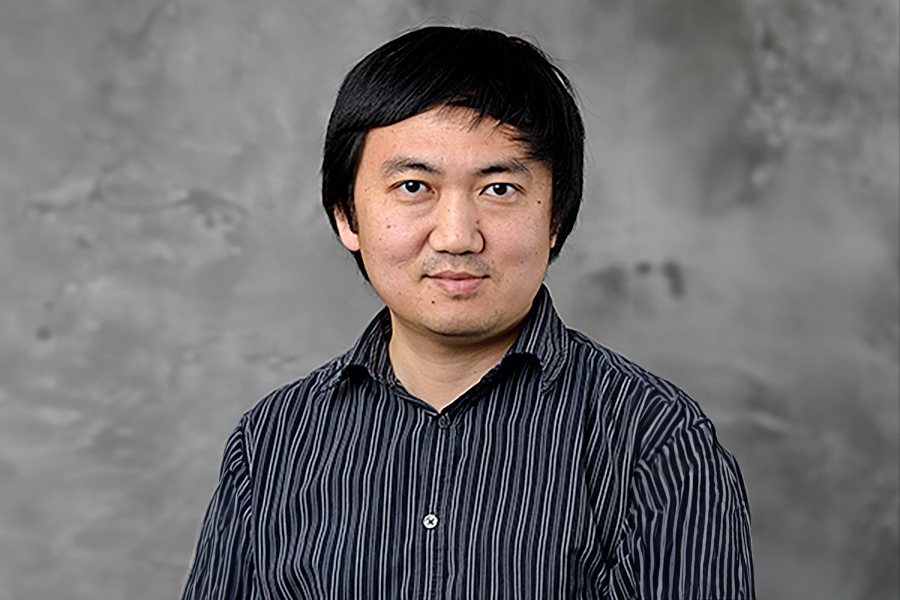September 19, 2024
Researchers Create 2D Materials with Pentagons as Building Blocks
Yong Chen, professor of electrical and computer engineering and physics, led this research, which introduces a new type of 2D material based on pentagonal patterns, expanding the family of known 2D materials. Most known 2D materials, like graphene, are based on hexagonal structures, so pentagonal materials provide new structural possibilities.

Yong Chen, Professor of ECE and Physics
Yong Chen, professor in Purdue University's Elmore Family School of Electrical and Computer Engineering, Karl Lark-Horovitz Professor of physics and astronomy, director of the Purdue Quantum Science and Engineering Institute, and director of the National Science Foundation-funded Center for Quantum Technologies, led a global collaboration of scientists whose research was published recently in Nature Materials.
This materials research establishes that it is possible to create metastable 2D pentagonal materials, considered difficult to make, thus enriching the 2D materials family, which so far is dominated by materials with hexagon building blocks. Pentagonal 2D materials could offer interesting mechanical, thermal, electrical, thermoelectric, optical and optoelectrical properties.
“For example, the unique nonlinear and anisotropic optical response expected of pentagonal 2D materials may allow efficient conversion of light between different colors and allow for manipulation of light propagation,” said Chen.
Most known 2D materials have hexagons as building blocks. In these known materials, the atoms on the 2D plane easily form a hexagonal arrangement giving a particularly stable configuration. While theory has predicted a large number of pentagonal 2D materials, many of these would be inherently unstable, thus impeding experimental realization.
“We used an appropriate substrate that better matched the lattice symmetry and geometry of pentagonal 2D materials – which have rectangular unit cells when projected on the 2D plane — to stabilize their growth. With this approach, we were able to grow PdTe2 in a pentagonal phase which is metastable, or slightly unstable,” explained lead author, Lina Liu.
Liu was a postdoc in Chen’s lab at Purdue and continued working with Chen as a postdoc at Aarhus University in Denmark, where Chen has been an affiliated professor.
"By first comparing the formation energies for pentagonal and hexagonal phases of several 2D materials, we realized that some of them, such as PdTe2 that we grew, show only slightly higher formation energy (thus “metastable”) of the pentagonal phase over the hexagonal phase (which is the lowest energy or stable phase), indicating that growing the pentagonal phases for them can be feasible,” Liu continued.
The successful growth of pentagonal PdTe2 opens the door to studying many intriguing properties and applications, such as optoelectrical properties/response in optoelectrical devices made from this novel group of pentagon-based 2D materials.
In addition to Chen and Liu, Dmitry Y. Zemlyanov, Senior Research Scientist at Birck Nanotechnology Center at Purdue University is a contributing author. Zemlyanov and Liu initiated the growth of the material using “symmetry-driven epitaxy” in the surface science laboratory at Birck Nanotechnology Center. Liu performed most of the experiments, some of which made use of a synchrotron-based X-ray facility in Aarhus, and conducted the data analysis.
The research at Purdue is funded in part by the U.S. Department of Energy, and University of Southern California which leads a Department of Defense Multidisciplinary University Research Initiatives (MURI) program that includes Purdue as a participating university.
